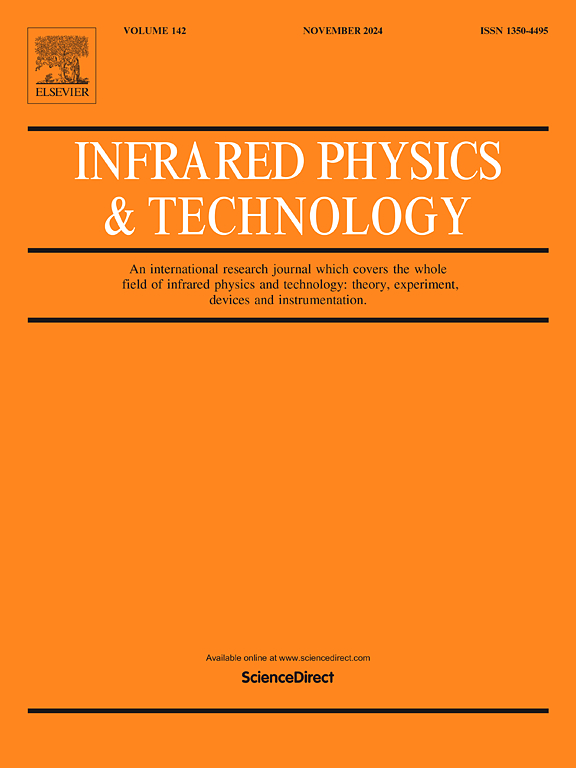FSCNet: Feature synthesis with wavelet coefficients for infrared small target detection
IF 3.1
3区 物理与天体物理
Q2 INSTRUMENTS & INSTRUMENTATION
引用次数: 0
Abstract
Infrared small target detection (IRSTD) has critical applications in fields such as infrared early warning and guidance. Recent studies have shown that data-driven deep learning methods achieve better performance than traditional model-driven approaches. Due to their small size, infrared small targets generally lack semantic details. However, most existing deep learning methods for IRSTD cannot preserve the small targets information due to the max-pooling downsampling operations they use to construct deep semantic feature maps in their target detection networks. In this paper, we propose FSCNet, an innovative deep learning framework specifically crafted for infrared small target detection. The network addresses the critical challenge of information loss prevalent in traditional deep learning models during the down-sampling process. Specifically, FSCNet introduces a wavelet coefficient-based feature extraction mechanism to effectively distinguish small targets from the background. By integrating the proposed frequency attention gate module (FAGM), the network is capable of enhancing high-frequency details that are typically obscured, ensuring that target features are retained even in deeper layers of the network. Additionally, we come up with the group spatial-channel Transformer block (G-SCTB), which facilitates the interaction and enhancement of multi-scale features, leading to a robust representation of small targets. Experimental results on three benchmarks NUAA-SIRST, NUDT-SIRST and IRSTD-1K demonstrate the effectiveness of the proposed FSCNet, which is competitive to the state-of-the-art infrared small target detection methods.
FSCNet:利用小波系数进行特征合成,用于红外小目标探测
红外小目标探测在红外预警和制导等领域有着重要的应用。最近的研究表明,数据驱动的深度学习方法比传统的模型驱动方法具有更好的性能。红外小目标由于体积小,通常缺乏语义细节。然而,大多数用于IRSTD的深度学习方法由于在目标检测网络中使用最大池下采样操作来构建深度语义特征映射,因此无法保留小目标信息。在本文中,我们提出了FSCNet,一个专门为红外小目标检测而设计的创新深度学习框架。该网络解决了传统深度学习模型在降采样过程中普遍存在的信息丢失的关键挑战。具体来说,FSCNet引入了一种基于小波系数的特征提取机制,有效地将小目标与背景区分开来。通过集成所提出的频率注意门模块(FAGM),该网络能够增强通常被模糊的高频细节,确保即使在网络的更深层中也能保留目标特征。此外,我们提出了组空间通道变压器块(G-SCTB),它促进了多尺度特征的交互和增强,从而实现了小目标的鲁棒表示。在NUAA-SIRST、NUDT-SIRST和IRSTD-1K三个基准上的实验结果表明,所提出的FSCNet与目前最先进的红外小目标检测方法相比具有一定的竞争力。
本文章由计算机程序翻译,如有差异,请以英文原文为准。
求助全文
约1分钟内获得全文
求助全文
来源期刊
CiteScore
5.70
自引率
12.10%
发文量
400
审稿时长
67 days
期刊介绍:
The Journal covers the entire field of infrared physics and technology: theory, experiment, application, devices and instrumentation. Infrared'' is defined as covering the near, mid and far infrared (terahertz) regions from 0.75um (750nm) to 1mm (300GHz.) Submissions in the 300GHz to 100GHz region may be accepted at the editors discretion if their content is relevant to shorter wavelengths. Submissions must be primarily concerned with and directly relevant to this spectral region.
Its core topics can be summarized as the generation, propagation and detection, of infrared radiation; the associated optics, materials and devices; and its use in all fields of science, industry, engineering and medicine.
Infrared techniques occur in many different fields, notably spectroscopy and interferometry; material characterization and processing; atmospheric physics, astronomy and space research. Scientific aspects include lasers, quantum optics, quantum electronics, image processing and semiconductor physics. Some important applications are medical diagnostics and treatment, industrial inspection and environmental monitoring.

 求助内容:
求助内容: 应助结果提醒方式:
应助结果提醒方式:


